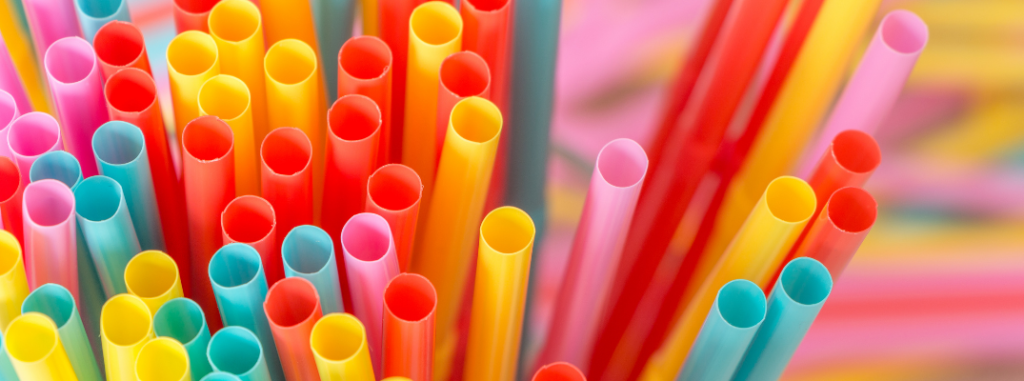Microplastics permeate the oceans. According to Craig Criddle, a professor of civil and environmental engineering, they are in about quarter of the seafood in stores and markets around the United States. In Nigeria, fishermen have revealed that separating plastic from their fish has become part of the fishing culture. Plastic pollution is also affecting human life; research shows that the much of the microplastic particles in our body comes from our natural air and bottled water. The result of these findings reaching mainstream knowledge is the anti- plastic waste advocacy groups rising at an exponential rate. In 2018, the groups seems to combine their global power to combat a distinct enemy: plastic straws.
The straw movement gained momentum in 2015 when a marine biologist shared a gory video of an injured sea turtle with part of a plastic straw caught in its nostril. The graphic video resurfaced in 2018; the year where many environmentalist groups– new and old– focused their attention on the danger of plastic straws. Many groups started petitions to ban straws state-wide, while others have appropriated more intimate approaches. Adrian Grenier has been one of the strongest campaigners. in 2017, the actor/environmentalist started the now viral StopSucking Campaign, challenging fans and fans of friends to give up the plastic. He has also taken to approaching specific establishments, such as Starbucks– one of the largest coffeehouses in the world— with a proposal for better straw materials.
The events that followed are evidence that the aggressive campaigning worked quite well for the cause.
2018 was arguably the most productive year for the movement’s rewards: Many cities in the United States banned straws (some adopting a straw-on-demand- law). In Taiwan, to help slowly transition into the no-plastic-straw-world, the restaurants, by law have imposed additional costs on plastic straws. Prime Minister of the United Kingdom, Theresa May, proposed that the nation ban plastic pests (straws, stirrers and cotton buds) by the end of 2018. Private entities have jumped on the lifestyle change, too: KFC reportedly terminated the use of plastic straws and lids in their restaurants. Likewise, Starbucks announced their pledge to switch to straw lids and biodegradable straws by the end of 2020 and a few restaurants around the world (many due to the new laws), have switched their straw types.
Are plastic straws that bad? like everything else we use too much of, yes, they are. Atlasoscuba describes these straws as “the world’s most wasteful commodity”. In addition, research shows that they are the 7th most common piece of trash on global beaches. So finding a way to ensure that they disappear is a step toward reducing waste on beaches (if nothing else).
Accessibility is an human rights issue, so it is of premium importance that we provide alternatives when we intend to take something away (especially for persons who need them). Due to its accessibility, cost and significantly lower impact on the environment, metal straws are usually the closest second. Other alternatives often pointed out are Bamboo, Glass, Titanium and wheatgrass.
Some are cheaper than others, but they are all, for varying reasons, better than plastic straws–especially as final products. However, to a large cluster of the global disable community, a ban on straws is a threat to their already threatened independence. In an article for Eater, Alice Wong a disability rights activist based in San Francisco, California, details how plastic straws have made her a lot more self sufficient. Wong discusses how persons with disabilities are often treated like burdens in public spaces and emphasis that banning plastic from restaurants will only intensify this.
The argument from anti-plastic-straws-activists, she says is that people with disabilities can use biodegradable options– like flexible/bendy paper straws or metal bendy straws with– but as she points out, it isn’t exactly easy to drink hot beverages out of these as they tend to melt or break apart. The other straw options are not suitable because they pose many different hazards, as the chart below describes:
Plastic straws are awful, sure. From the manufacturing to final product, yes. But like the pesty straws, the alternatives, if used innately, can become risks to both the human life and the environment. The production of steel for instance, requires excessive energy, is highly polluting and tends to only increase because we find new ways to use this material everyday. Excessive use of bamboo is also linked to many environmental and human rights violations.
What we tend to do is use materials to capacity and then demonise them where costs outweigh benefits. The results are almost always burden of adjustment which very often falls on the underserving minority.
A ban on plastic straws is fine not as the ultimate solution to ending the use of plastic pollution (they currently make up less than 1% of global ocean waste) but as a tool to emphasize the risks of overconsumption and how burdens tend to shift. Wong suggests that rather than a total ban, providing options and hoping the message is not lost. It would be a shame if we leave out the minorities when what we claim to fight for is global social responsibility.

